by Wil Fleming – 3/19/2013
 Sneak into any Russian training hall, Chinese sports school, or Bulgarian weightlifting Mecca and you'll see dozens of guys with traps popping out of their T-shirts, backs as wide as freeways, and quads that would make the Incredible Hulk turn another shade greener.
Sneak into any Russian training hall, Chinese sports school, or Bulgarian weightlifting Mecca and you'll see dozens of guys with traps popping out of their T-shirts, backs as wide as freeways, and quads that would make the Incredible Hulk turn another shade greener.
These world-class weightlifters may possess the powerful physiques we all want, yet they aren't following the typical models when it comes to putting on muscle mass.
It's not Hypertrophy Training For Dummies that they're using – you won't find these guys maxing out reps on the dumbbell shrug, leg extension, or leg curl machine. Instead, you'll see power cleans, snatches, deadlift variations, and several other killers that both stretch the seams of your shorts and scare your momma.
However, were I to peruse college textbooks or ask successful bodybuilder at the gym how to get ripped and get huge, it would be unlikely that the Olympic lifts would come up in any way, shape, or form.
It's because they're seemingly diametrically opposed endeavors, as the main thing it takes to put on muscle mass, high reps, is the kryptonite of Olympic lifting.
So what gives? My eyes tell me that Olympic lifting can make people jacked, but the textbooks and empirical evidence tell me that Olympic lifting and putting on size don't mix.
If you're on this site you know how to get bigger. It's no secret, putting on size means some serious time under the bar, but let's review some hypertrophy basics.
The main objective in training for hypertrophy is maximal protein catabolism. In so doing, one should stimulate maximal synthesis of muscle protein in the recovery phase. Break down more muscle through your workouts and gain more muscle through your recovery.
Protein catabolism is greatest when the repetitions per set number 5-12, and the recovery between sets is 1-2 minutes. Training sessions for hypertrophy typically focus on a particular muscle group rather than a particular pattern of movement.
However, compare the above with Olympic lifting and you'll see more differences than while comparingRambo to The Notebook.
There's absolutely nothing similar about training protocols for Olympic lifting and hypertrophy. Hypertrophy calls for high reps, Olympic lifting calls for low reps. Hypertrophy calls for minimal rest, Olympic lifting for maximal rest.
So what gives? Training for hypertrophy and using Olympic lifting are like oil and water, but there obviously must be some way to get jacked and use Olympic lifting.
 There's one common problem that we must overcome to make Olympic lifting useful for hypertrophy.
There's one common problem that we must overcome to make Olympic lifting useful for hypertrophy.
Hypertrophy requires volume, and big increases in volume result in huge changes muscle size.
But this runs contrary to what most Olympic lifters typically do, as an Olympic lifting program for even a national level lifter rarely exceeds 200-300 reps per week.
Contrast this with the typical "3 sets of 10 reps" hypertrophy workout we often see recommended in beginner bodybuilding articles – applying that to just a total of 10 exercises per week would yield more reps than most serious Olympic lifters do in a week.
Now this doesn't mean that sets of 3 reps are now sets of 10 and 12 reps. That won't work with the Olympic lifts (I'll explain why later). We sneak in volume by using combo movements to double or triple the volume of an exercise.
Combos are multiple movements completed 1 repetition at a time, or 1+1+1 until completion. This is in contrast to a complex where movements are completed in their entirety until completion.
Two examples of a heavy combo are below. The first is a clean combo of deadlift, full clean, and front squat.
In the video I complete it for 1 repetition each. The key here is that I chose a weight (125 kilos) that would be challenging had I done it for only 1 repetition of the full clean, as it's about 85% of my current 1RM.
In a typical Olympic lifting program, doing singles at 85% of your 1RM is not uncommon, but by using a combo I was able to sneak 2 extra reps in to my weekly volume.
The second combo is a snatch combo of snatch deadlift, snatch high pull, and power snatch.
In the video I complete the movement for 1+1+1 x2, making the total reps completed in the set fall right in the middle of the number of reps one should be doing for hypertrophy (6 reps).
Heavy combos used for hypertrophy should be done with 2-4 combined movements done one rep at a time. Make sure that when doing them the total reps completed within any given set doesn't exceed 10.
The rules of combos go out the window with this one exception, the Klokov combo.
The Klokov combo is named after Russian lifter, Dmitry Klokov. This combo features 5 movements in sequence completed for 1 repetition each: deadlift, full clean, front squat, push press, and split jerk.
If combos are named after animals (i.e., the bear), this one should be named the shark-tiger-bear. Try completing this combo with 80-85% of your 1RM.
Klokov has famously completed this exact complex with 205 kilos on the bar. The bar has been set!
While I'm trying to be all sneaky about adding extra reps into Olympic lifts to train for hypertrophy, I'm certain some are thinking, "Wait, why don't I just do sets of 8-12 reps on the clean?"
The answer is simple: high rep Olympic lifts are terrible for you. Consult any textbook and you'll find that Olympic lifts are never prescribed for more than 5 repetitions...ever. Consult any successful coach and they'll tell you that 90% of all sets should be done at 3 reps or below. See, no matter where you turn, it just isn't a good idea.
The problem with high rep Olympic lifts is that no matter how good the technician is at the movements, their form will ultimately break down as the set goes on.
The regression complex is a perfect remedy for this problem.
The concept is simple. Take a complex movement and at the precise moment that form typically breaks down, regress to a similar movement that requires less technical efficiency.
Here's a video of me doing a regression complex of power snatches and snatch grip Romanian deadlifts for 5 reps of each. It's another sneaky way to add repetitions to your Olympic lift training program and get huge in the process.
A second example is to use the power clean and deadlift in a 3+3 complex. While 110 kilos isn't typically a challenging weight on the deadlift, it's an entirely different story after knocking out several cleans and clean pulls first.
So how do you use these? Should you just throw some extra reps at your workout and hope for some gains?
No, use the 3-week training program below to quickly develop mountainous traps, aircraft carrier lats, and giant quads. You've got my word on it.
While hypertrophy isn't normally the province of Olympic lifting, here's your opportunity to get creative like a weightroom Picasso and implement some sneaky strategies to gain massive size from the O lifts.
 Sneak into any Russian training hall, Chinese sports school, or Bulgarian weightlifting Mecca and you'll see dozens of guys with traps popping out of their T-shirts, backs as wide as freeways, and quads that would make the Incredible Hulk turn another shade greener.
Sneak into any Russian training hall, Chinese sports school, or Bulgarian weightlifting Mecca and you'll see dozens of guys with traps popping out of their T-shirts, backs as wide as freeways, and quads that would make the Incredible Hulk turn another shade greener.These world-class weightlifters may possess the powerful physiques we all want, yet they aren't following the typical models when it comes to putting on muscle mass.
It's not Hypertrophy Training For Dummies that they're using – you won't find these guys maxing out reps on the dumbbell shrug, leg extension, or leg curl machine. Instead, you'll see power cleans, snatches, deadlift variations, and several other killers that both stretch the seams of your shorts and scare your momma.
However, were I to peruse college textbooks or ask successful bodybuilder at the gym how to get ripped and get huge, it would be unlikely that the Olympic lifts would come up in any way, shape, or form.
It's because they're seemingly diametrically opposed endeavors, as the main thing it takes to put on muscle mass, high reps, is the kryptonite of Olympic lifting.
So what gives? My eyes tell me that Olympic lifting can make people jacked, but the textbooks and empirical evidence tell me that Olympic lifting and putting on size don't mix.
Hypertrophy Basics
If you're on this site you know how to get bigger. It's no secret, putting on size means some serious time under the bar, but let's review some hypertrophy basics.The main objective in training for hypertrophy is maximal protein catabolism. In so doing, one should stimulate maximal synthesis of muscle protein in the recovery phase. Break down more muscle through your workouts and gain more muscle through your recovery.
Protein catabolism is greatest when the repetitions per set number 5-12, and the recovery between sets is 1-2 minutes. Training sessions for hypertrophy typically focus on a particular muscle group rather than a particular pattern of movement.
However, compare the above with Olympic lifting and you'll see more differences than while comparingRambo to The Notebook.
There's absolutely nothing similar about training protocols for Olympic lifting and hypertrophy. Hypertrophy calls for high reps, Olympic lifting calls for low reps. Hypertrophy calls for minimal rest, Olympic lifting for maximal rest.
| Variable | Hypertrophy | Normal O Lifting |
| Intent | Activate and exhaust working muscles | Recruit maximal motor units |
| Reps | 5-7 to 10-12 | 1-3 |
| Rest Intervals | 1-2 minutes/set | 3-5 minutes/set |
| Volume | Large | Small |
| Weight Used | Maximal or sub-maximal | Maximal or sub-maximal |
Using Olympic Lifting for Hypertrophy
 There's one common problem that we must overcome to make Olympic lifting useful for hypertrophy.
There's one common problem that we must overcome to make Olympic lifting useful for hypertrophy.Hypertrophy requires volume, and big increases in volume result in huge changes muscle size.
But this runs contrary to what most Olympic lifters typically do, as an Olympic lifting program for even a national level lifter rarely exceeds 200-300 reps per week.
Contrast this with the typical "3 sets of 10 reps" hypertrophy workout we often see recommended in beginner bodybuilding articles – applying that to just a total of 10 exercises per week would yield more reps than most serious Olympic lifters do in a week.
Now this doesn't mean that sets of 3 reps are now sets of 10 and 12 reps. That won't work with the Olympic lifts (I'll explain why later). We sneak in volume by using combo movements to double or triple the volume of an exercise.
Heavy Combos
Combos are multiple movements completed 1 repetition at a time, or 1+1+1 until completion. This is in contrast to a complex where movements are completed in their entirety until completion.Two examples of a heavy combo are below. The first is a clean combo of deadlift, full clean, and front squat.
In the video I complete it for 1 repetition each. The key here is that I chose a weight (125 kilos) that would be challenging had I done it for only 1 repetition of the full clean, as it's about 85% of my current 1RM.
In a typical Olympic lifting program, doing singles at 85% of your 1RM is not uncommon, but by using a combo I was able to sneak 2 extra reps in to my weekly volume.
In the video I complete the movement for 1+1+1 x2, making the total reps completed in the set fall right in the middle of the number of reps one should be doing for hypertrophy (6 reps).
The Klokov Combo
The rules of combos go out the window with this one exception, the Klokov combo.The Klokov combo is named after Russian lifter, Dmitry Klokov. This combo features 5 movements in sequence completed for 1 repetition each: deadlift, full clean, front squat, push press, and split jerk.
If combos are named after animals (i.e., the bear), this one should be named the shark-tiger-bear. Try completing this combo with 80-85% of your 1RM.
5+5 Regression Complexes
While I'm trying to be all sneaky about adding extra reps into Olympic lifts to train for hypertrophy, I'm certain some are thinking, "Wait, why don't I just do sets of 8-12 reps on the clean?"The answer is simple: high rep Olympic lifts are terrible for you. Consult any textbook and you'll find that Olympic lifts are never prescribed for more than 5 repetitions...ever. Consult any successful coach and they'll tell you that 90% of all sets should be done at 3 reps or below. See, no matter where you turn, it just isn't a good idea.
The problem with high rep Olympic lifts is that no matter how good the technician is at the movements, their form will ultimately break down as the set goes on.
The regression complex is a perfect remedy for this problem.
The concept is simple. Take a complex movement and at the precise moment that form typically breaks down, regress to a similar movement that requires less technical efficiency.
Here's a video of me doing a regression complex of power snatches and snatch grip Romanian deadlifts for 5 reps of each. It's another sneaky way to add repetitions to your Olympic lift training program and get huge in the process.
How to Use Them
So how do you use these? Should you just throw some extra reps at your workout and hope for some gains?No, use the 3-week training program below to quickly develop mountainous traps, aircraft carrier lats, and giant quads. You've got my word on it.
Week 1
Workout 1
| Exercise | Sets | Reps | |
| A | Snatch Combo: Snatch Deadlift, Snatch High Pull, Power Snatch | 4 | 1+1+1x2 |
| B | Back Squat | 4 | 5 |
| C | Push Press | 4 | 5 |
| D | Abs | 3 | X |
Workout 2
| Exercise | Sets | Reps | |
| A | Clean Regression Complex | 4 | 5+5 |
| B | Clean Pull | 4 | 4 |
| C | Dumbbell Row | 2 | 12 |
| D | Turkish Get-Up | 3 | 2 each |
Workout 3
| Exercise | Sets | Reps | |
| A | Snatch Regression Complex | 4 | 5+5 |
| B | Front Squat | 4 | 5 |
| C | Split Jerk | 4 | 3 |
| D | Abs | 3 | X |
Workout 4
| Exercise | Sets | Reps | |
| A | Klokov Combo | 4 | 1+1+1+1+1 |
| B | Back Squat | 4 | 5 |
| C | Pull-Up | 4 | 10 |
| D | Turkish Get-Up | 3 | 2 each |
Week 2
Workout 1
| Exercise | Sets | Reps | |
| A | Snatch Combo: Snatch Deadlift, Snatch High Pull, Power Snatch | 4 | 1+1+2x2 |
| B | Back Squat | 4 | 6 |
| C | Push Press | 4 | 5 |
| D | Abs | 3 | X |
Workout 2
| Exercise | Sets | Reps | |
| A | Clean Regression Complex | 4 | 5+5 |
| B | Clean Deadlift | 4 | 5 |
| C | Dumbbell Row | 2 | 12 |
| D | Turkish Get-Up | 3 | 2 each |
Workout 3
| Exercise | Sets | Reps | |
| A | Snatch Regression Combo | 4 | 5+5 |
| B | Front Squat | 4 | 6 |
| C | Split Jerk | 4 | 3 |
| D | Abs | 3 | X |
Workout 4
| Exercise | Sets | Reps | |
| A | Klokov Combo | 4 | 1+1+2+1+1 |
| B | Back Squat | 4 | 6 |
| C | Pull-Up | 4 | 10 |
| D | Turkish Get-Up | 3 | 2 each |
Week 3
Workout 1
| Exercise | Sets | Reps | |
| A | Snatch Combo: Snatch Deadlift, Snatch High Pull, Power Snatch | 4 | 2+1+2x2 |
| B | Back Squat (10% higher than week 1) | 4 | 5 |
| C | Push Press | 4 | 5 |
| D | Abs | 3 | X |
Workout 2
| Exercise | Sets | Reps | |
| A | Klokov Complex | 5 | 1+1+1+1+1 |
| B | Clean Deadlift | 4 | 5 |
| C | Dumbbell Row | 2 | 12 |
| D | Turkish Get-Up | 3 | 2 each |
Workout 3
| Exercise | Sets | Reps | |
| A | Snatch Regression Combo | 4 | 5+5 |
| B | Snatch High Pull | 4 | 5 |
| C | Split Jerk | 4 | 3 |
| D | Abs | 3 | X |
Workout 4
| Exercise | Sets | Reps | |
| A | Clean Combo: Deadlift, Full Clean, Front Squat | 4 | 2+2+2 |
| B | Back Squat | 4 | 6 |
| C | Pull-Up | 4 | 10 |
| D | Turkish Get-Up | 3 | 2 each |
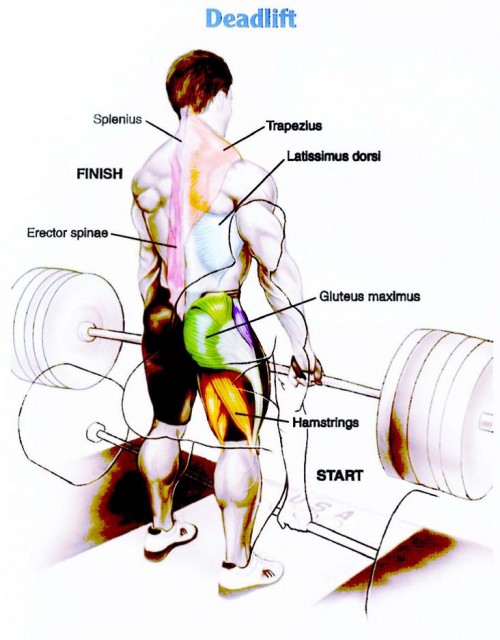
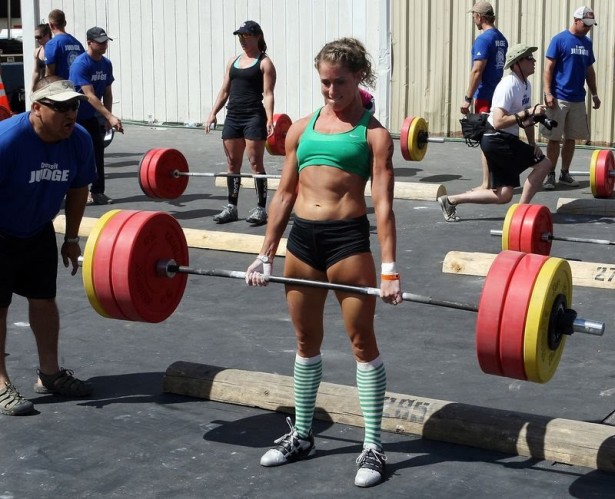
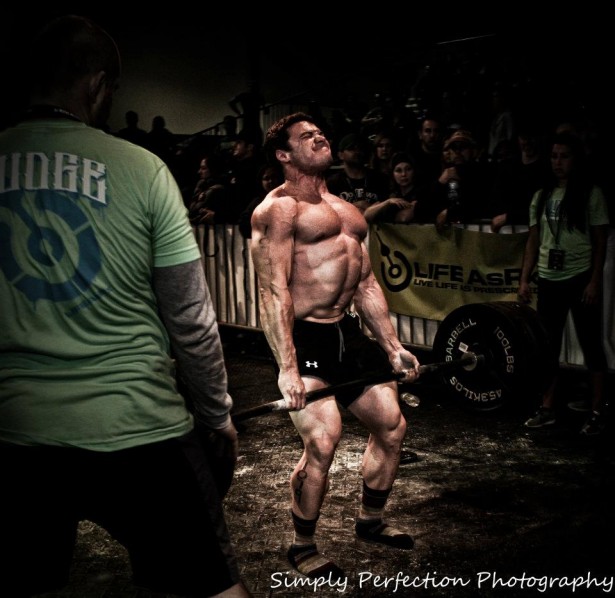
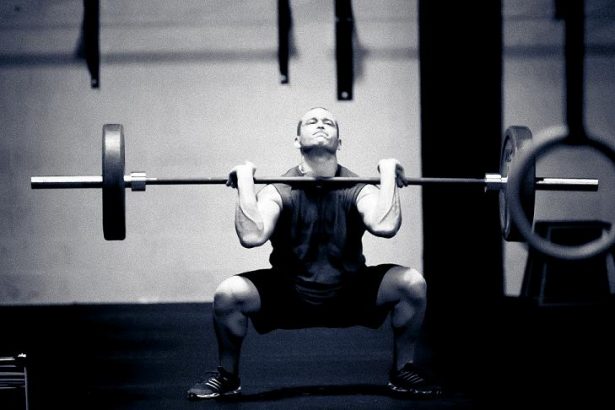
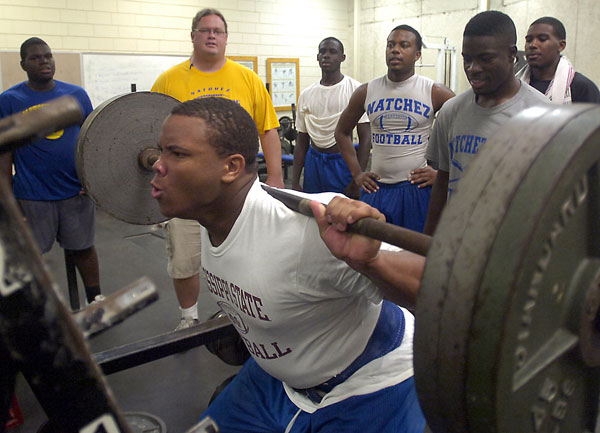
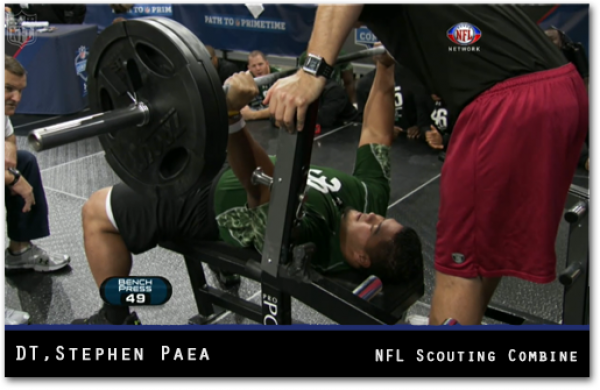
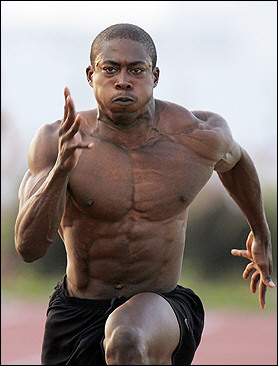

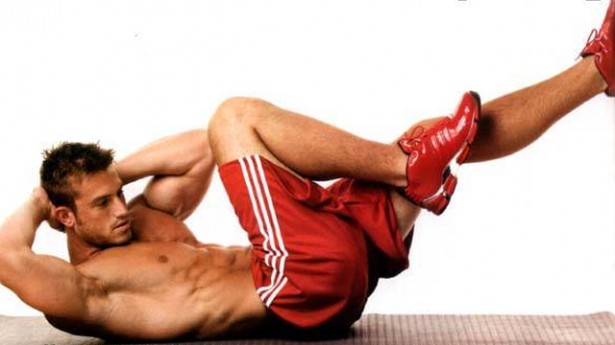
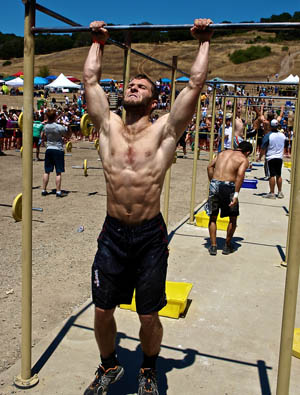
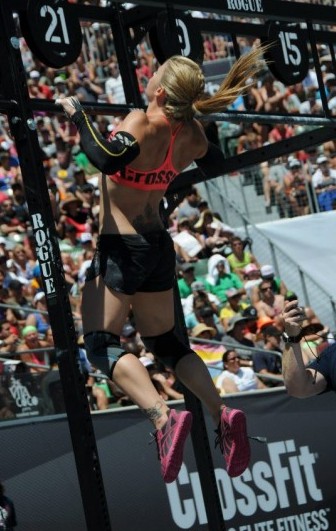
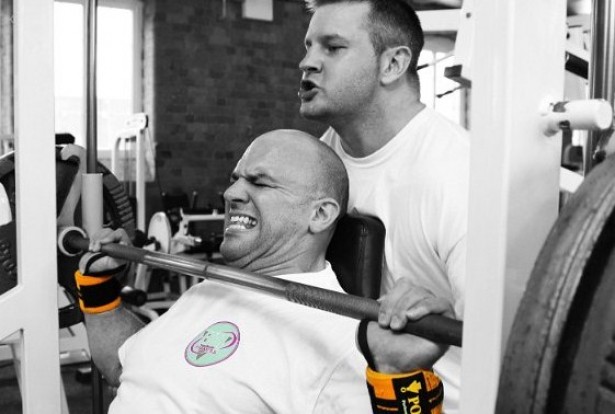
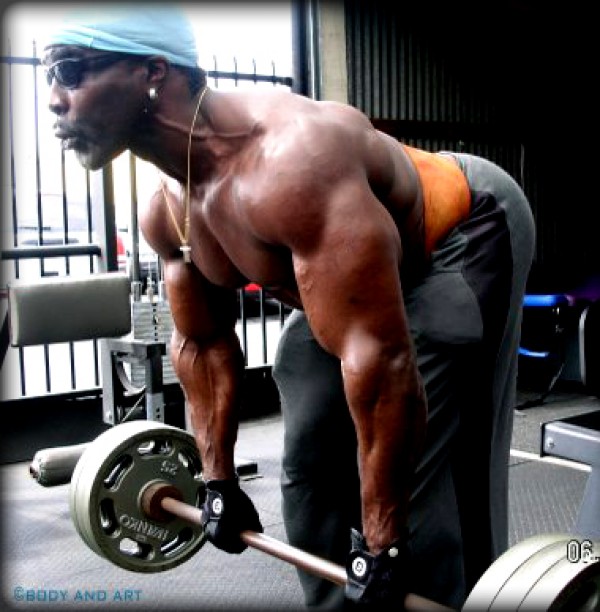
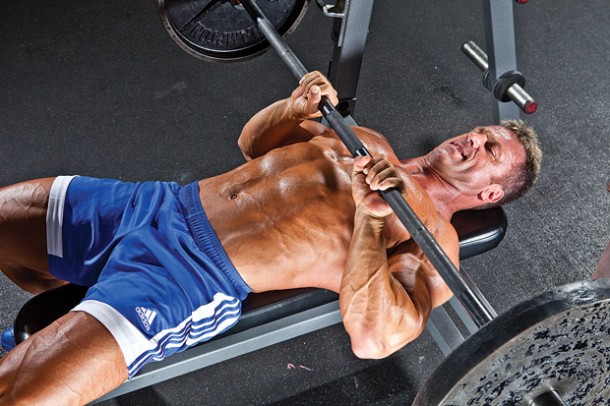
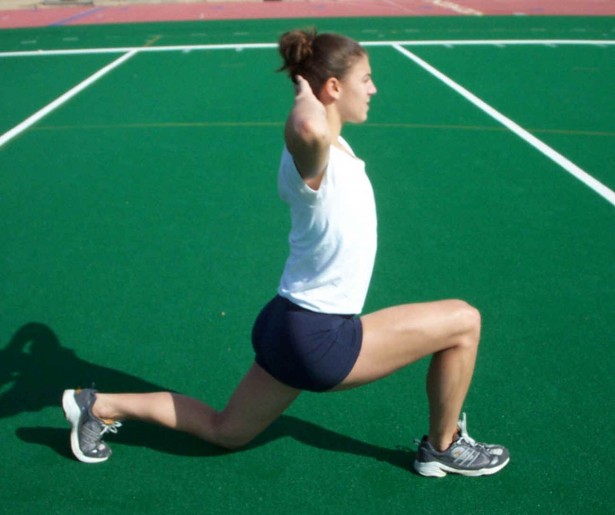
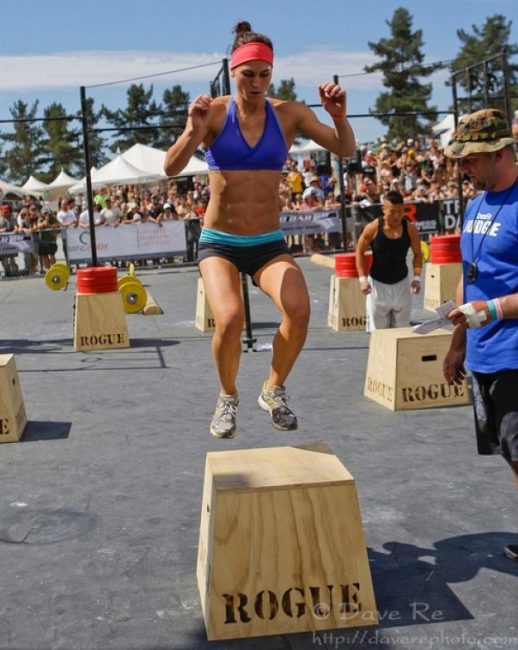
 I'm not an incredible squatter. On a spectrum of squatting proficiency, I'd fall somewhere at the far end of average, just before the transition into good.
I'm not an incredible squatter. On a spectrum of squatting proficiency, I'd fall somewhere at the far end of average, just before the transition into good.
 A big toolbox with a lot of tools that we don't know how to use is, well, useless. Variation for variations sake is great for bored children and for info-marketers theorizing about neuromuscular confusion. Our tools, however, are applicable. Here's how to use the four stronger squat exercises.
A big toolbox with a lot of tools that we don't know how to use is, well, useless. Variation for variations sake is great for bored children and for info-marketers theorizing about neuromuscular confusion. Our tools, however, are applicable. Here's how to use the four stronger squat exercises. If you want size, strength, and improved athletic performance, you must be able to squat well. If you're like I was five years ago, you have work to do. Throw these tools in your tool box and get to the grind.
If you want size, strength, and improved athletic performance, you must be able to squat well. If you're like I was five years ago, you have work to do. Throw these tools in your tool box and get to the grind.